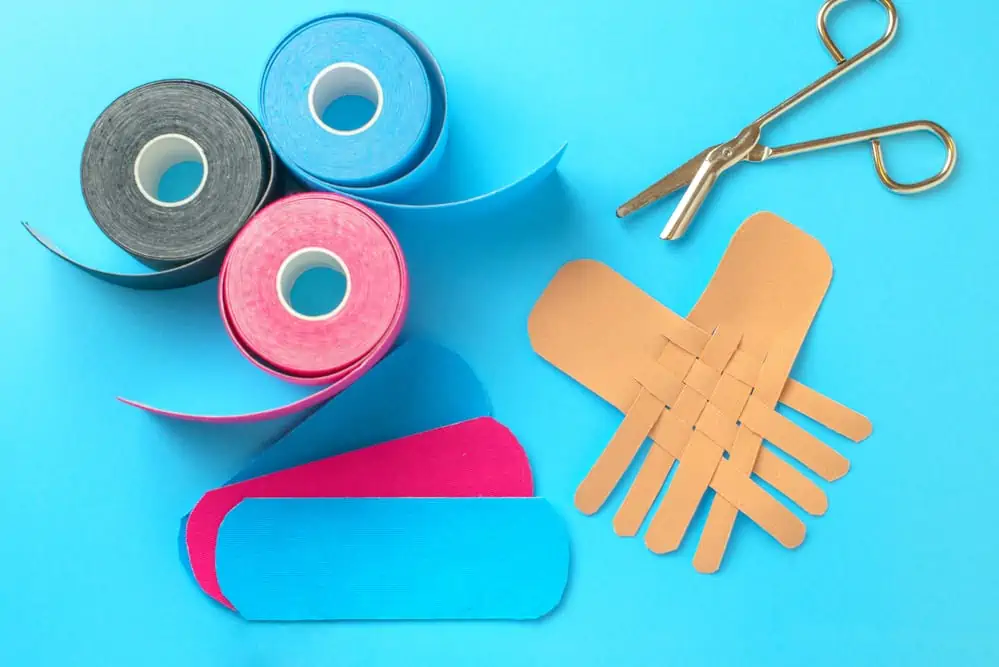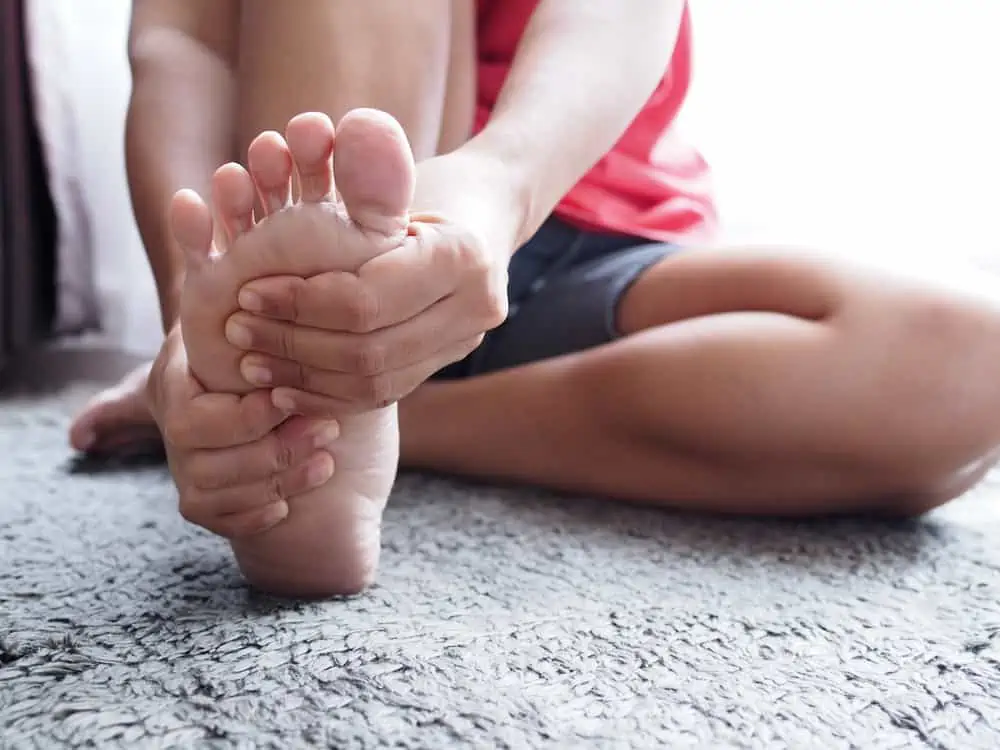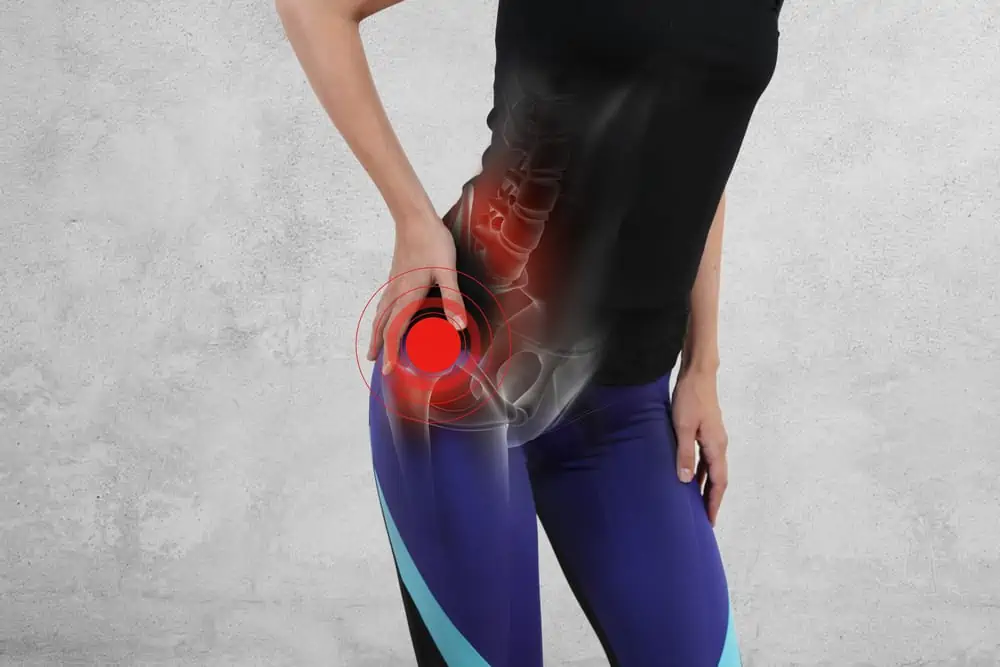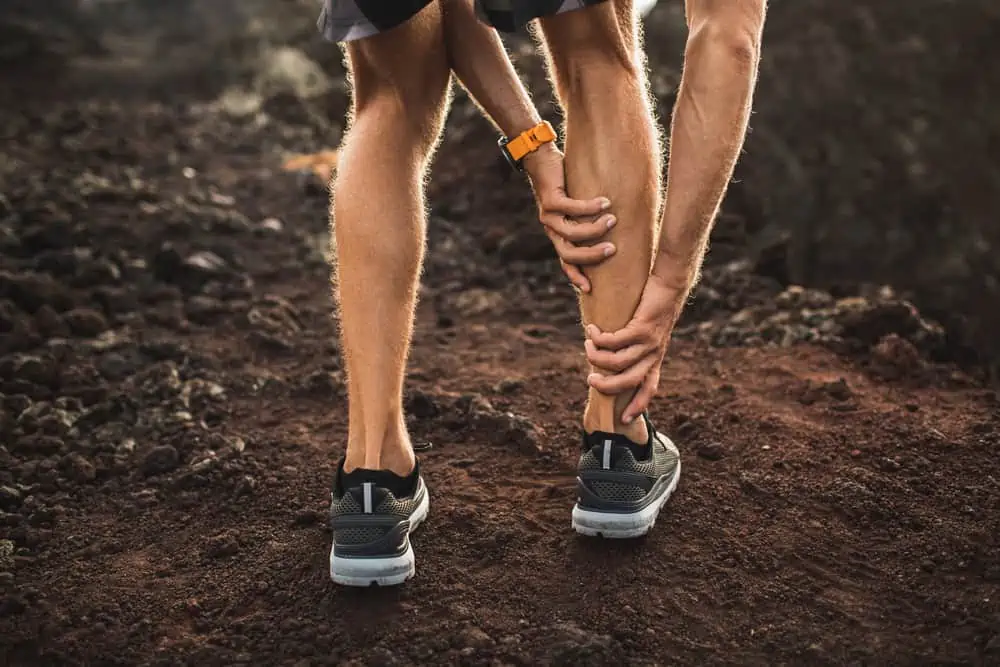This post may contain affiliate links. If you click through a link and make a purchase, I may receive a commission at no additional cost to you. As an Amazon Associate, I earn from qualifying purchases. Read the full disclosure here.
Tape is tape, right? Wrong.
If you’ve ever found yourself riddled with indecision in the sports tape aisle, you’ll quickly learn there’s quite a variety.
So before you just grab any old tape and hope for the best, this article will explore the differences between kinesiology tape vs. athletic tape so you can choose the right one for your needs.
Disclaimer: This content is for educational purposes and is not medical advice. Read the full disclaimer.
What is kinesiology tape?
Kinesiology tape is a style of therapeutic tape made with flexible elastic to allow the tape to move with you rather than restrict movement.
The material of most brands is constructed from a breathable fabric with a medical-grade adhesive to allow the tape to stay on for several days.
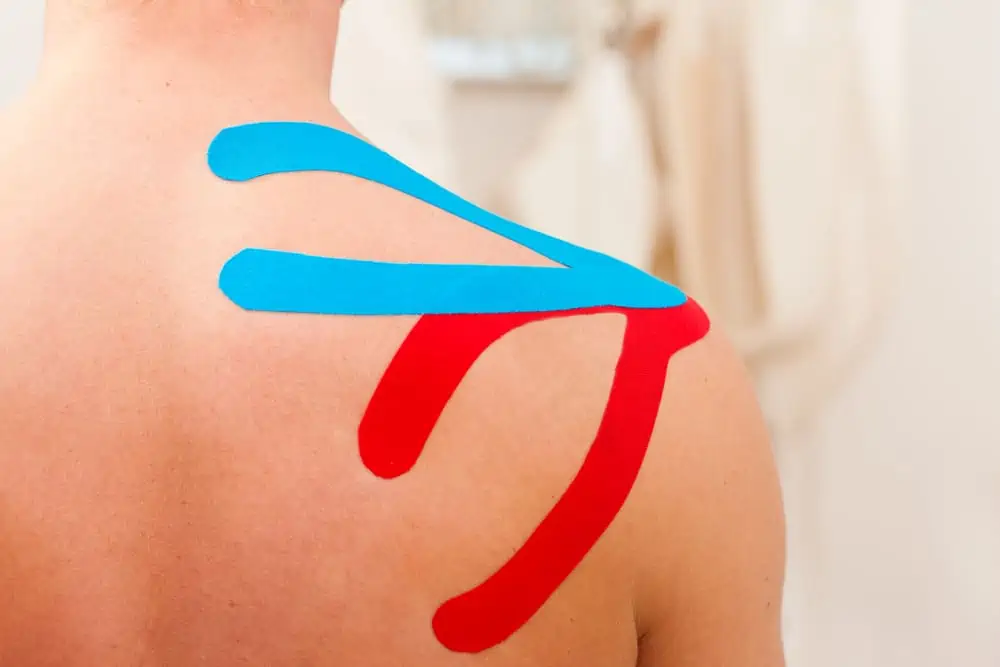
It’s also waterproof, so it can stay on throughout showering or swimming, and air dries after. A word of caution – don’t try to speed this up with a blow dryer. The adhesive in kinesiology tape shouldn’t be exposed to high heat. It could cause skin irritation.
The original kinesiology tape is the Kinesio Tape brand, invented by Dr. Kenzo Kase in the 1970s.
Since then, many other brands of kinesiology tape have hit the market, such as Rock Tape, KT Tape, Theraband Kinesiology Tape, and Spider Tech. Each has its own secret sauce spin on therapeutic tape.
I got certified in the Kinesio taping method back in 2009 when taping was all the rage. I still find it a beneficial tool for some people.
Just to distinguish, the term “kinesiology tape” is the umbrella term for this type of taping. “Kinesio tape” is a brand and not just an abbreviation for the word kinesiology.
My top two favorite brands are Kinesio Tex Tape and Rock Tape because they seem to stay on the best, in my experience.
Related read: How Does Kinesiology Tape Work
What is kinesiology taping used for?
Since kinesiology tape is an elastic tape, it doesn’t restrict movement and has a wide variety of applications for musculoskeletal pain and beyond.
Some reasons for using kinesiology tape are:
- Muscle activation to improve strength
- Improve proprioceptive input
- Re-educate muscles for healthy movement patterns
- Pain relief
- Scar management
- Improve circulation
- Decrease swelling
- Decrease bruising
- Improve athletic performance
What specific problems does kinesiology tape work well for?
Kinesiology tape has a wide variety of techniques and uses. Part of the variety comes from the ability to cut the tape into multiple shapes to create whatever you need.
Not everyone responds to taping, but I’ve had good responses with Kinesio taping for several different conditions.
I use it most frequently for patellofemoral issues, shoulder pain, Achilles tendonitis, lumbar muscle strains, tennis elbow, and scar tissue management.
It’s worth noting that tape alone doesn’t fix issues but can be a part of a well-rounded rehab plan.
Kinesiology tape vs. athletic tape
Athletic tape is very different than kinesiology tape. Athletic tape is a non-flexible tape applied to the skin or over pre-wrap to stabilize and support an area.
Your traditional athletic tape is usually white in color, but nowadays, you can also purchase colors to match your team.

Another type of rigid tape is Leukotape, which is a tan color and is more expensive than generic athletic tape, however, is stronger and has a more sticky adhesive.
What is athletic tape used for?
Athletic tape is primarily used to stabilize joints or limit range of motion after sports injuries. Common areas to tape for added support are ankles and wrists, such as after an ankle sprain.
Because athletic tape provides a compressive effect, it’s not meant to be used long-term. It’s meant to be supportive for a particular activity and then removed after.
When using this type of tape, keep an eye out for signs of compromised circulation, such as tingling, numbness, abnormal swelling, or skin tone/coloration changes.
Athletic tape isn’t waterproof, so it’s not meant to keep on in the shower or pool. Keeping athletic tape on while wet can compromise the skin underneath.
As far as Leukotape, I use it for calcaneal fat pad taping for plantar fasciitis in conjunction with a cover roll between the skin and the tape. Leukotape is also used for McConnell patellar taping techniques.
Since Leukotape is thicker, some people use it as a barrier to prevent blisters in cleats or hiking shoes.
Are there any downsides to taping?
Taping works best when combined with other appropriate treatments.
It shouldn’t be used for the long term to hold you together while you continue the same bad habits. Tape is meant to help you through a particular phase of your rehab. It’s not meant to be a lifelong treatment.
Whatever tape you’re using, it’s important that you understand why you’re taping and how to tape properly. Taping incorrectly can compromise skin integrity or even cause injury if overcorrecting a condition.
If you’re not sure how to use tape, have a physical therapist or athletic trainer instruct you on the proper techniques.
Lastly, taping doesn’t guarantee less risk of injury. You’ll still need to modify activities and respect tissue healing times.
Which type of tape is the best?
When it comes to kinesiology tape vs. athletic tape, it depends on whether you’re looking to restrict motion or not.
Each type of tape has its own benefits, and it depends on your reasons for taping.
When it comes to tape, quality does matter. Nothing is more frustrating than your tape falling off minutes or hours later. Here are some top-rated brands for each type of tape to check out.
Best kinesiology tape
Best athletic tape
- Cramer 750 Athletic Trainer’s Tape (can be used in conjunction with pre-wrap to protect skin and tape adhesive spray)
- Leukotape (can be used in conjunction with cover roll stretch to protect skin as well as tape adherent spray)
- Mueller MTape (can use in conjunction with pre-wrap and tape adherent spray)
Wrapping up
Whatever type of tape you’re using is only useful if applied correctly and for the right reasons.
Make sure you understand why you’re taping, how to tape properly, and how taping fits into a well-rounded rehab program for best results.

